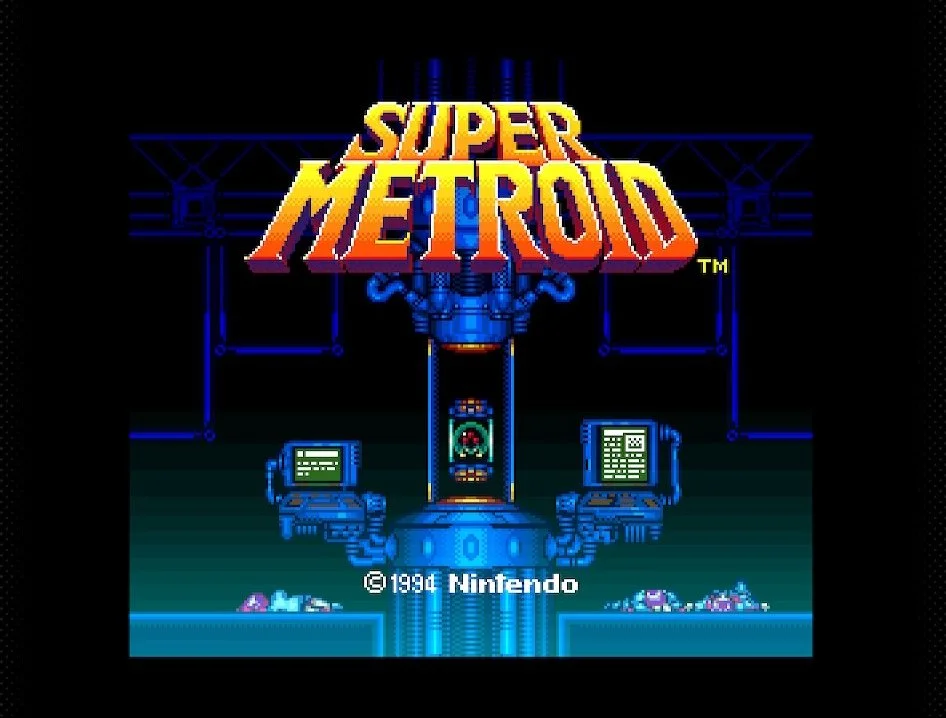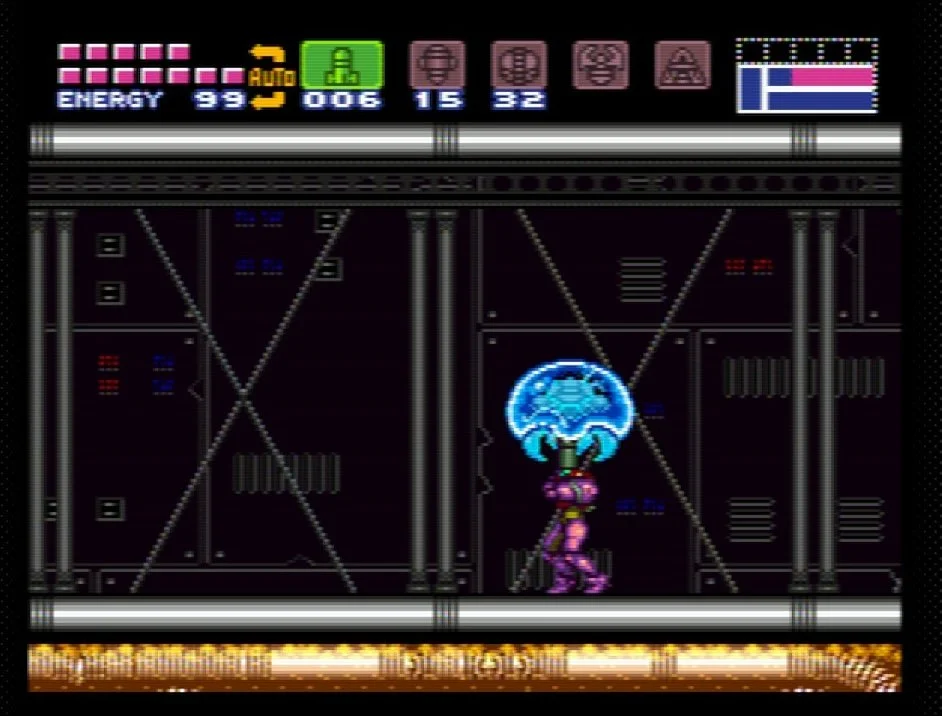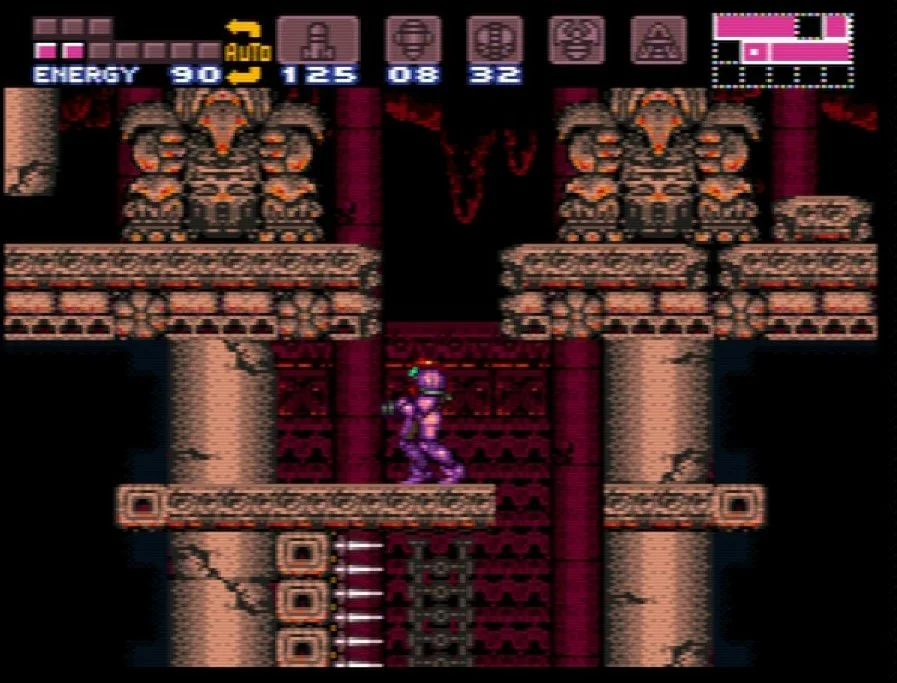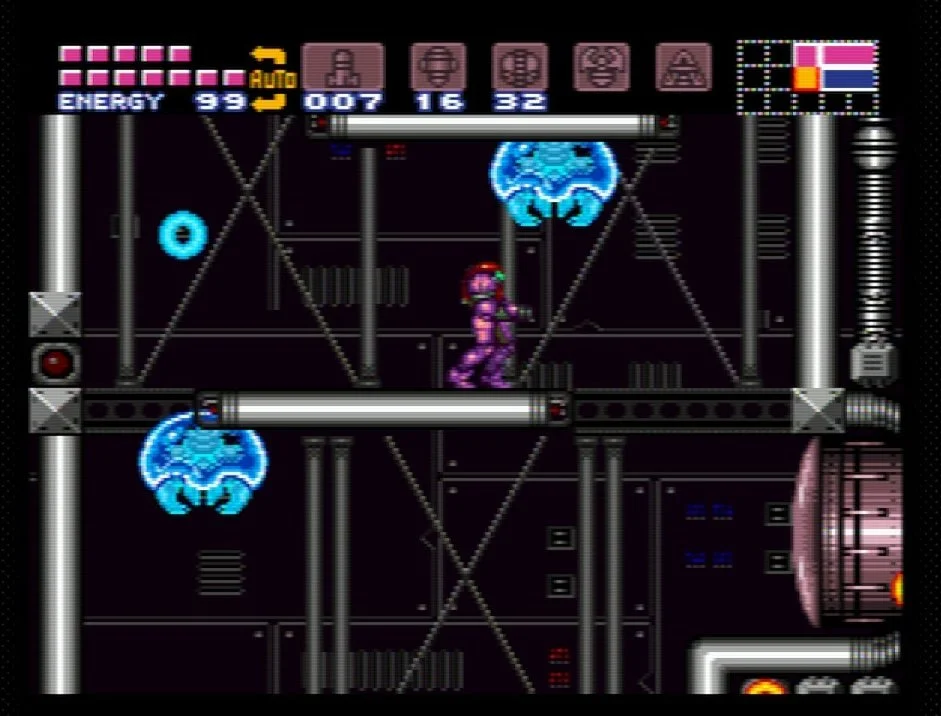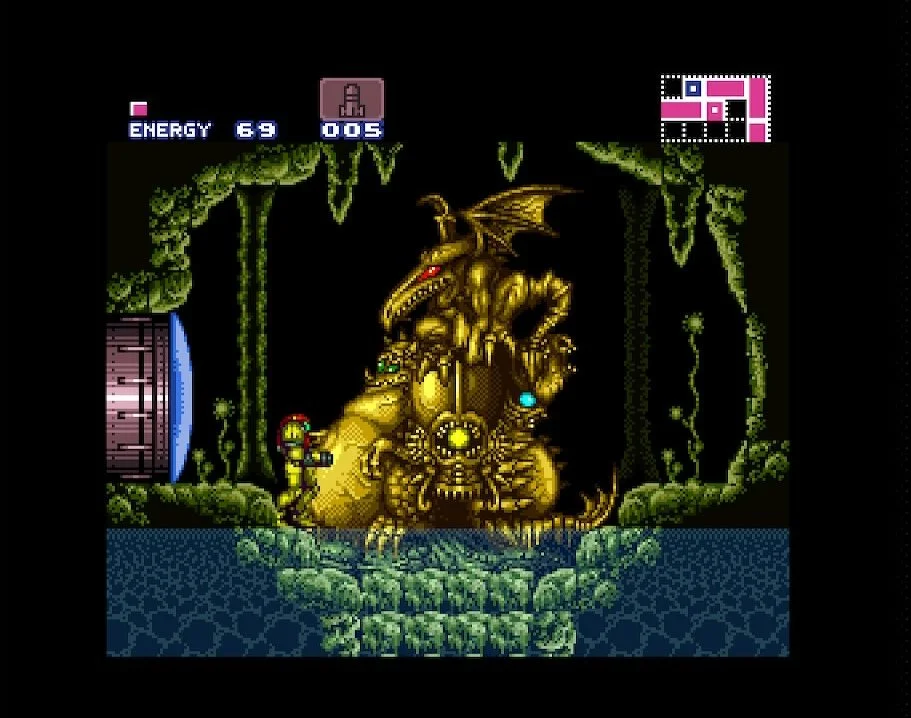Super Metroid Review
Played on NSO | Original Release Date 18 April 1994 | Review Date 10 October 2025
OVERVIEW
In the grand discourse about video games there has never been a game that gets referenced more than Metorid…okay, well maybe Castlevania. Two games that have, inextricably been connected by gaming lexicon. But we aren’t here to talk about Metroid, we’re here to talk about Super Metroid. The most Metroid-Vania of all Metroid-Vanias, and my favourite in the series. From the eerie atmosphere of Zebes, to the expanded world building, boss fights, control and music - Super Metroid shine sparks its way into being one of the best games in video game history and one that sits as one of my favourite games off all time - but does it still hold up and can it continue to keep players attention today?
STORY
Samus, our badass heroine, get her’s character inspiration from Sigourney Weaver in Aliens. Thank you 1980’s Nintendo for creating one of the first female leads in video games, strong move. For those who don’t know, Samus Aran is a bounty hunter who is doing her best to rid the galaxy of Metroid’s - the life sucking entities that are being harvested as bio weapons. This Samus’ third mission in the series and, as always, she finds herself alone on a planet, that has mysterious relics from the Chozo - a bird-like race of aliens that has mysteriously disappeared. We never really find out why she’s been roped into all of this bounty hunting, but god bless her, she’s just get’s on with it. After ridding Zebes of the titular Metroid’s, and taking down the space pirates in her first outing on the NES, Samus was called to a the birthplace of the Metroid’s, planet SR388 to eradicate them once and for all, only for a baby Metroid to hatch and bond with Samus and save her life. And now, in Super Metroid, Samus returns to Zebes to save the baby Metroid only to find out that the Space Pirates and Mother Brain are back! Samus, devoid of all her powers, must traverse her way through Zebes, retreading familiar territory, discovery new locations, collect her power-ups and take down Mother Brain once and for all.
GAMEPLAY
This is the series that established the Metroid-vania genre, and Super Metroid is probably one of the best examples of the formula. You start off with the ability to jump and fire a puny short range arm cannon. Very quickly you discover the morphball ability which allow Samus to crotch down in to a ball-like shape to support her exploring the planet. You find your way through the planet’s maze-like structure, fight enemies, discovery secret pathways, find new power ups that give you new abilities like boots that boost your jumping ability to reach new platforms or ice beam to freeze enemies giving you the upper hand to defeat them. This addictive game play loop provides challenge, puzzles solving, intense action moments as well as awkward and frustrating platforming. A core part of the game play experience in all Metorid’s is that you come across parts of the world that you can see, but you can’t access right away. You’ll enter into a room and you’ll see an area below where Samus is standing, but you can’t get down there because you haven’t found the bombs yet. You continue along the path and eventually you’ll find the bombs and need to backtrack to open up the route to the previously inaccessible area.
This is probably my favourite aspect of Metroid-vanias, and also frustrates me to no end as well. I often found myself lost in the game without an obvious way forward, even when I’d found the item I needed to progress. This is sometimes due to the fact that I just forgot about an area that I’d come across earlier in the game, but it is also due to the fact that sometimes you have to shoot or bomb all areas of a room to find a secret block that looks just like the rest of the room. And when you do, it’s a sense of joy, it’s a sense of frustration at annoying game design - there’s just no need for it. But these frustrating moments are few and far between in an otherwise expertly crafted world full of branching pathways and lots of different areas to explore. Thankfully in Super Metroid introduced the map system for the first time in the series allowing the player to puzzle out how to get from one area to another in much more accessible way.
Control
For this play through I played on the NSO SNES app with the Nintendo SNES controller. I mention this because, I think this is the only way to really experience the game. Of course you can use the Joy Con, the Pro Controller, or any other (probably superior) modern day third party controller, but something must feel ‘right’ with the Nintendo SNES controller. Probably in my head, but you’ll never be able to convince me otherwise. Okay, that being said, control in this game is a bit of a mixed bag. Samus is super floaty. She feels ‘soft’ in how she responds and moves about the game. This isn’t about lag, but more of a fundamental choice by the programmers. I eventually found my rhythm with the movement, but I wish they would have made things just a little more tight or precise with Samus’s movements. The worst offenders are the wall jump and the screw attack - both difficult to master for no reason at all. I don’t know what the programmers were thinking when they made two of the key mechanics of the game some of the least responsive to control. There’s a section in the game where you have to fall down a massive pit, only to follow some weird, but very adorable, space monkeys as they try and demonstrate how you wall jump back up the same pit you were made to fall in. And for anyone who’s played the game, you know how infuriating this section of the game is. This, my dear readers, is thankfully one of the only ‘awful’ flow breakers of the game. The screw attack is less of a challenge to master, but it just feels off to me.
Power-Ups
Poor control rant over. The rest of Samus’s move set is fun to discover, fun to implement after gaining the power and, for the hundred percenters out there, a joy to utilised for discovering all the collectables. (I only managed to 70% of them on my play through - but who is counting?). Samus has her usual bag of tricks, but unique to this game are the grappling ‘gun’ and the X Ray Visor. I lied. (bad controls scheme diatribe is back) the grappling gun sucks, there is no easy way to use it, but it becomes fun when you do learn to master it. The X Ray Visor on the other hand, is a game changer that basically becomes an in-game cheat mode. Stuck on where to go? Use the X-Ray Visor to see if there is a wall you can bomb or invisible wall you can walk through. This might seem like an ‘easy mode’ item, but I love it.
All the other Metroid stalwarts find there way back into Samus’ arsenal. The aforementioned bombs, the morph ball, the high jump, the Varia suit, the freeze beam. There all here and they don’t disappoint. By the end game Samus is laying Super Bombs to clear a room, freezing enemies to jump on and find secret places and pulverizing bosses with Super Missiles. She’s a badass and she kicks butt.
Bosses
Speaking of bosses there are plenty to work your way through and they are woven into the exploration and environments in really cool ways. Kraid is back and bigger than ever, literally taking over two screens worth of real estate. There is some sort of one eyed, ghost-like, octopus-esque, demon who terrorises the ghost ship. A mega shrimp-like creature with long crab legs who uses its minions and electric shocks to annihilate Samus. And of course our dear friend Ridley who can’t help but make an appearance at the start and end of the game. There are also a couple of mini-bosses. A one armed lava monster that uses its big claw to try and murder Samus and a bouncy plant like enemy that wouldn’t be amiss in a Poison Ivy comic book of Batman. For the most part, I really enjoyed each of these boss fights. They presented their own unique challenge and felt rewarding to win. There was only one boss fight that made me really work for it, while the rest I was overpowered for. The final boss, Mother Brain could’ve been more challenging in my opinion, but the joy of watching the battle play out was so cool. Such an awesome spectacle of SNES graphical effects, story telling through action, along with music and sound effects.
GRAPHICS
This is 16-bit sprite perfection. This is the version of Samus that would be the blueprint for the character for years to come. She is so well animated and detailed that she puts some sprite work of today to shame. The game employs a lot of the graphical tricks that the SNES could pull off, from sprite scaling to various different shading effects and graphical layers, they all come together to create a lonely, haunting, and creepy world. From the first battle with Ridley, when the creature’s eyes slowly appear in the background out of nowhere, to the bombastic light show that takes place during the final battle with Mother Brain, the graphics never disappoint. Each area of the world is distinct and immediately recognisable. Not only is this good graphical and art design, but it serves to visually cue the player as to what area on the map they are currently exploring. And as distinct as each areas is they all feel like they belong in this world. And it’s not just the bosses and the environments that shine graphically, the enemies littered around the planet are superb as well. Each of them creatures of their environment and easily identifiable. Super Metroid’s graphics were some of the best in its day, and I would argue still hold up as some of the best ever.
MUSIC
Speaking of sound - this has to be some of the best use of the SNES sound chip ever. Each area of Zebes has its own unique and memorable soundscape. if you haven’t already, just listen to this soundtrack, it’s 16-bit bliss and bangers. A key draw to Metorid’s success is the atmosphere the game creates and the music is absolutely core to this. It’s totally punching above its weight and it never disappoints. There are moments of minimalist sound that create brilliant atmospheric fear. While other areas fill the experience with synth and orchestral mixes that perfectly punctuate the environments they were written for. Of note are the under water areas with their slower melodic notes and the middle sections with their bass filled beats and choral accompaniments, and of course the main theme that still randomly plays in my mind.
CONCLUDING THOUGHTS
Super Metroid deserves its praise and place in gaming history. It’s not perfect and some aspects of it don’t hold up when compared to modern games that were inspired by it. But it stands the test of time with its addictive gameplay, fun play mechanics, and tight action sequences and boss battles. For those of us that played it when it was released back in 1994, it was mind-blowing and an instant classic a must own game for the SNES and it’s still a must play game for anyone who is interested in the Metroid-vania formula or anyone who simply wants to play a great game.
OUT OF SYNC GAMING REVIEW SCORE | 9 out of 10
What do you think of Share your thoughts and comments below.

